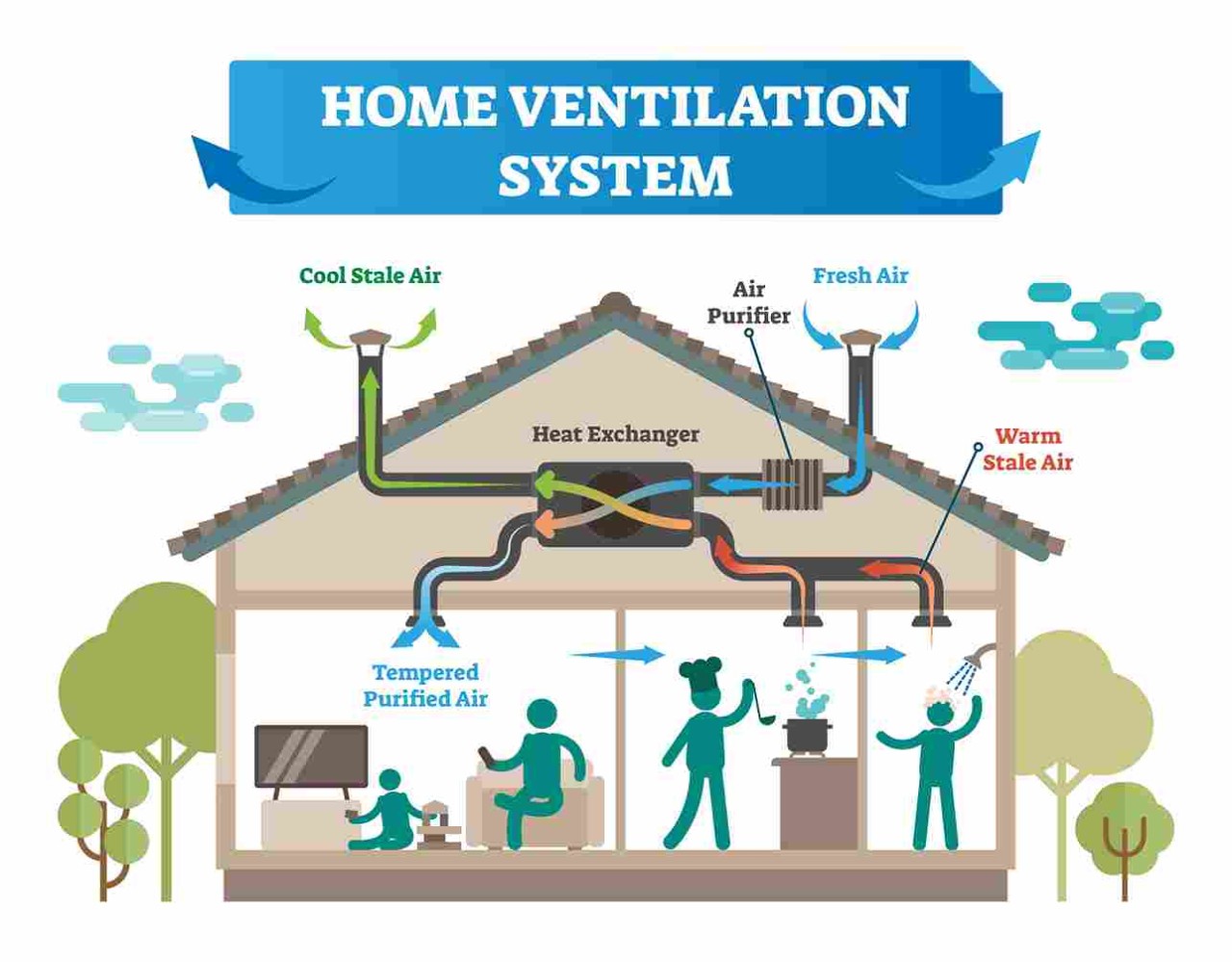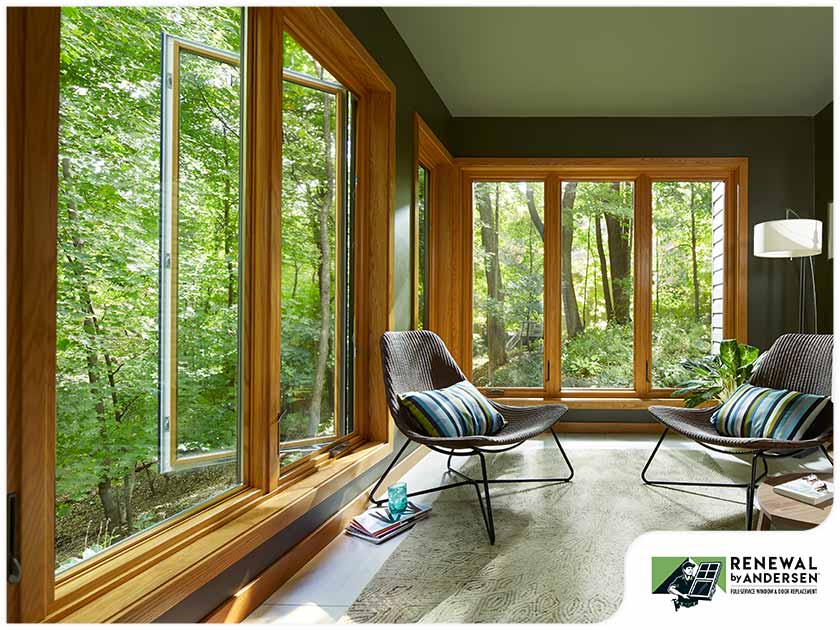Understanding the Importance of Home Air Flow for a Healthier Living Environment
Home ventilation plays a crucial role in keeping a healthy living atmosphere. It assists in the exchange of exterior and interior air, which is essential for boosting air quality. Without proper air flow, homes can come to be reproducing premises for irritants and toxins. The consequences of poor air blood circulation can be significant. This brings up the questions of exactly how property owners can properly implement air flow techniques to safeguard their health and wellness and wellness. Comprehending these methods is essential.

The Essentials of Home Ventilation
Home ventilation acts as an essential element of interior air top quality and comfort. It entails the process of trading stagnant interior air with fresh exterior air, thus decreasing humidity and controlling temperature. Appropriate ventilation systems can include all-natural techniques, such as open windows and vents, as well as mechanical systems, such as exhaust followers and air exchangers. Reliable home air flow assists stop problems like interior mold and mildew development and the accumulation of harmful fragments. It also improves overall energy efficiency, as well-ventilated spaces can keep comfortable temperatures with less dependence on home heating and cooling down systems. Comprehending the fundamentals of home air flow is crucial for homeowners seeking to produce a healthier living setting on their own and their households.

Common Sources of Indoor Air Air Pollution

Numerous may not understand it, interior air pollution can stem from different sources within a household. Common factors consist of unstable organic substances (VOCs) given off from paints, solvents, and cleansing products. House home appliances, such as gas ranges and fireplaces, can launch damaging gases like carbon monoxide and nitrogen dioxide. Furthermore, mold and mildew and mildew thrive in damp locations, launching spores that influence air high quality. Pet dander, allergen, and pollen can gather inside your home, further aggravating contamination levels. Smoking inside produces toxic chemicals that stick around airborne. Ultimately, building materials, consisting of asbestos and formaldehyde, can off-gas unsafe compounds. Identifying these sources is essential for preserving a healthier indoor environment and advertising reliable ventilation approaches.
Wellness Impacts of Poor Ventilation
Interior air contamination can have substantial health and wellness effects, especially when air flow is insufficient. Poor air flow can cause the accumulation of unsafe pollutants, such as unpredictable organic substances, mold, and particle issue. This buildup may lead to respiratory system problems, consisting of bronchial asthma, allergies, and chronic obstructive pulmonary illness. Individuals might experience signs like migraines, tiredness, and inflammation of the eyes, nose, and throat. Susceptible populaces, such as youngsters and the senior, go to greater risk for serious wellness impacts. Long-lasting exposure to badly aerated settings can additionally add to much more major problems, consisting of cardio conditions. Consequently, making certain appropriate air flow is crucial for keeping a healthy living atmosphere and minimizing the danger of health difficulties related to indoor air pollution.
Efficient Ventilation Strategies for Your Home
Correct ventilation is vital for preserving a healthy and balanced indoor setting, and implementing efficient strategies can considerably improve air top quality. Homeowners can begin by making certain that exhaust fans are set up in bathroom and kitchens to eliminate excess dampness and odors. Opening up windows regularly permits fresh air to flow, specifically throughout moderate weather. Furthermore, utilizing air cleansers with HEPA filters can assist catch air-borne toxins. For homes with home heating and cooling systems, maintaining a/c systems and changing filters regularly is important for peak performance. Incorporating natural air flow methods, such as cross-ventilation, click here for more can also enhance air movement. Ultimately, securing any leaks in home windows and doors prevents unwanted drafts, which can interfere with regulated air movement, inevitably leading to enhanced interior air top quality and comfort.
Keeping Ideal Air Quality Year-Round
To maintain perfect air quality year-round, property owners need to embrace a positive method to managing their indoor atmosphere. On a regular basis keeping an eye on interior air top quality is vital; this consists of monitoring for toxins such as dirt, mold and mildew, and volatile organic compounds (VOCs) Implementing reliable air flow systems, such as exhaust followers and air purifiers, can considerably minimize airborne contaminants. Additionally, routine maintenance of HVAC systems guarantees peak efficiency and air blood circulation. Home owners must likewise think about humidity levels, as extreme wetness can cause mold development. Seasonal adjustments might necessitate changes in advice air flow approaches to suit differing outdoor air high quality. By focusing on these methods, home owners can produce a much healthier space, advertising overall wellness for all owners throughout the year.
Often Asked Inquiries
Exactly How Can I Inform if My Home Requirements Better Air Flow?
To identify if a home requires much better ventilation, one need to observe indications such as persistent moisture, mold growth, musty smells, condensation on home windows, or raised allergy signs, suggesting insufficient air flow and potentially bad interior air quality.
What Are the Indicators of Poor Indoor Air Top Quality?

Can Houseplants Improve Indoor Air Quality Efficiently?
The performance of houseplants in improving interior air quality is questioned. While some studies recommend they can take in toxins and create oxygen, their general effect might be very little compared to proper ventilation and air filtering systems.
Just how Often Should I Change My Air Filters?
The frequency of air filter changes usually depends on use and filter type. Usually, it is advised to replace filters every 3 months, though homes with allergic reactions or pet dogs might need more constant modifications for ideal efficiency.
Exist Any Kind Of Specific Ventilation Equipments for Allergic Reaction Sufferers?
Numerous ventilation systems, such as HEPA-filtered devices, effectively minimize irritants in the air. Home Ventilation Melbourne. These systems trap pollen, dust, and family pet dander, giving allergic reaction patients with a cleaner, healthier interior atmosphere while managing air top quality properly
It promotes the exchange of indoor and outdoor air, which is important for enhancing air quality. Home air flow serves as an essential element of indoor air high quality and comfort. resource It entails the process of trading stagnant indoor air with fresh outdoor air, consequently reducing moisture and managing temperature. Interior air pollution can have substantial health implications, particularly when ventilation is inadequate. Proper air flow is essential for keeping a healthy indoor atmosphere, and carrying out reliable approaches can substantially improve air quality.